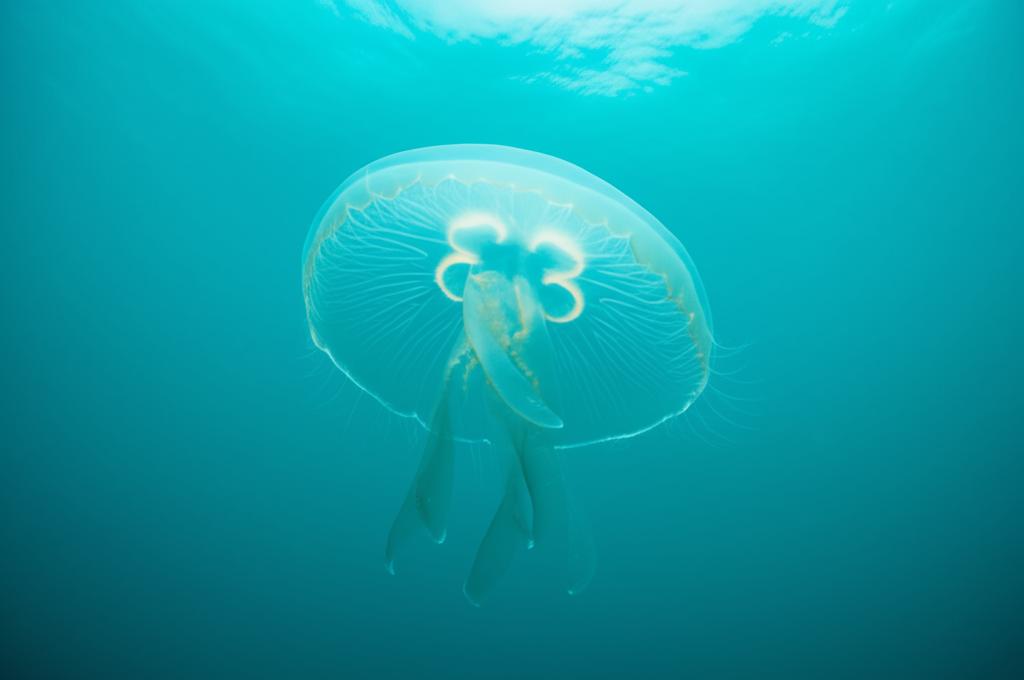Jellyfish, despite their apparent simplicity and lack of a centralized brain, are offering profound insights into the evolutionary origins of nervous systems and cognition. Recent studies are challenging long-held beliefs that advanced learning capabilities are exclusive to animals with complex, centralized brains.
Jellyfish: More Than Just Simple CreaturesFor over 500 million years, jellyfish (phylum Cnidaria) have thrived, representing some of the earliest living animals to develop nervous systems. Traditionally, these systems were considered rudimentary, capable only of the simplest forms of learning, such as habituation – getting used to a repeated stimulus. However, groundbreaking research, particularly on Caribbean box jellyfish ( Tripedalia cystophora ), reveals a more sophisticated reality.
These small, fingernail-sized creatures, equipped with a complex visual system of 24 eyes but no central brain, have demonstrated the ability to learn from experience. Specifically, they can learn to navigate and avoid obstacles, a crucial skill for survival in their mangrove swamp habitats where they hunt prey among underwater tree roots. This learning is associative, meaning they can form mental connections between sensory stimuli (like seeing a root) and behaviors (like turning to avoid it).
Learning Without a Central BrainStudies have shown that Caribbean box jellyfish can learn to associate visual cues with potential collisions. In experiments mimicking their natural environment, jellyfish initially bumped into simulated mangrove roots (represented by stripes on a tank). However, after only a few (three to five) failed evasive maneuvers, they learned to modify their behavior, increasing their distance from the "roots" and reducing collisions. Remarkably, this learning rate is comparable to that observed in animals with more complex nervous systems, like fruit flies and mice.
The learning process in these jellyfish appears to involve their visual sensory centers, known as rhopalia. Each rhopalium houses six eyes and generates pacemaker signals that control the jellyfish's pulsing movements. Researchers have found that these rhopalia can serve as learning centers. By simulating collisions (using weak electric stimulation) when visual cues of approaching obstacles were present, scientists demonstrated that the rhopalia could learn to generate obstacle-dodging signals in response to those visual cues alone. This indicates that the combination of visual and mechanical stimuli is crucial for their associative learning.
Implications for Understanding Neural Evolution and CognitionThese findings have significant implications for our understanding of several key areas:
- Evolution of Nervous Systems: The discovery that jellyfish can perform complex learning tasks challenges the notion that such abilities arose only with the evolution of centralized brains. It suggests that advanced learning may have been an important evolutionary advantage from the very early stages of nervous system development.
- Fundamental Neuroscience: Studying the "simpler" nervous systems of jellyfish provides a more tractable way to understand the detailed mechanisms of how neurons work together to produce behavior, including learning and memory formation. It allows scientists to investigate the minimum complexity a nervous system needs for complex behaviors.
- Redefining Cognition: The cognitive capabilities observed in jellyfish force a broader definition of cognition, one that is not solely reliant on a complex, centralized brain. It highlights that decentralized neural networks can achieve sophisticated information processing and behavioral adaptation.
- Early Life on Earth: Understanding the neural systems of cnidarians like jellyfish can offer clues about what the earliest nervous systems on Earth looked like and how they functioned. By comparing these systems to those of other animals, researchers can make inferences about the origins and early evolution of all nervous systems.
- Potential for AI and Robotics: The decentralized and efficient learning mechanisms found in jellyfish could inspire new approaches in artificial intelligence and robotics, particularly in developing distributed learning systems and autonomous underwater robots.
Box jellyfish possess four parallel brain-like structures, each containing approximately a thousand nerve cells. While this is a tiny fraction compared to the human brain's roughly 100 billion nerve cells, these structures, particularly the rhopalia, appear to function as independent learning centers. This decentralized system allows jellyfish to perform complex behaviors necessary for survival.
Future DirectionsOngoing research aims to delve deeper into the cellular and molecular interactions within jellyfish nervous systems to unravel the precise mechanisms of memory formation. Scientists are also working to understand how mechanical sensors in the jellyfish's bell contribute to their associative learning. The use of genetically modified jellyfish, such as Clytia hemisphaerica, allows researchers to image and manipulate neural activity in real-time, providing unprecedented insights into how their entire nervous system coordinates behavior. These transparent organisms offer a unique window into the fundamental principles of neural network organization and function.
In summary, the humble jellyfish is emerging as a crucial model organism in neuroscience. Its relatively simple, yet surprisingly capable, nervous system is providing invaluable insights into the ancient origins of learning, memory, and the fundamental building blocks of cognition, reshaping our understanding of how intelligence can manifest in the animal kingdom.

